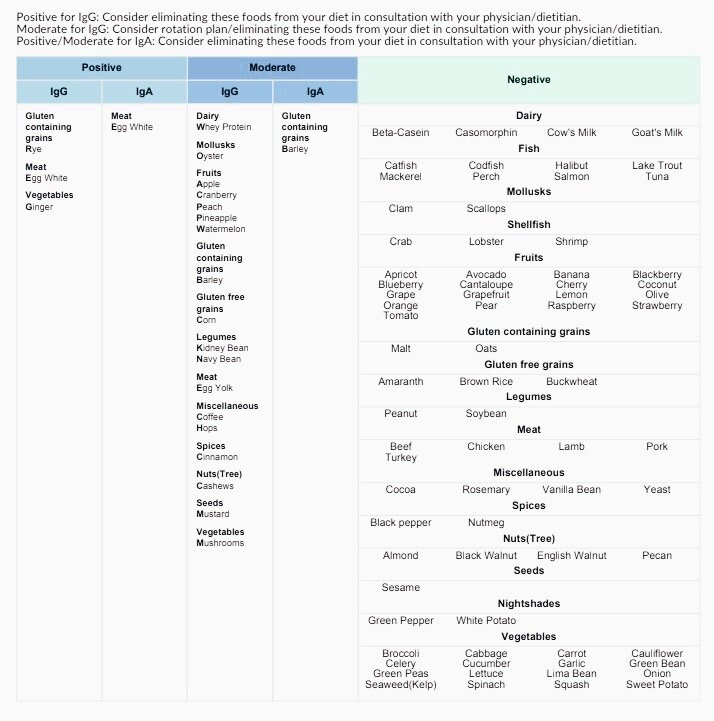My Experience With a Food Sensitivity Test
Hard-boiled eggs. I’ve eaten one every morning for years. Then, I learned that they were one of the only foods that my body was highly sensitive to, according to the Vibrant Wellness Food Sensitivity Test I took at STAT Wellness.
I’ve been wanting to do the blood test for a few years now, as food sensitivities lead to inflammation in the body, which can lead to symptoms like gas, diarrhea, nausea, skin irritation, etc. So, when I was visiting STAT Wellness for another piece for the website, and the opportunity presented itself, I jumped at it. (And FYI, friends, I did pay for the test with my own money.)
Here’s how it works… First, I had a few vials of blood drawn, which were sent off to a lab so that the IgG and IgA in my blood could be measured. (More on what these are in a second.) Next, the levels of these two things in my blood were registered in regard to a variety of foods ranging from catfish to cranberries. Then, I received a document that shared which foods I have a positive, moderate, and negative reaction to based on a scale of 0-30.
If a food falls in the negative range (0-10), the document explained that I didn’t need to be concerned about it. If it falls in the moderate range (11-20), I could eliminate it from my diet (at least for a bit). And if it falls in the positive range (21-30), I should strongly consider eliminating it. (See the photo below for an example.)
For the science specifics, I asked Kristin Oja, founder of STAT, for the details. (Kristin has a doctor of nursing practice, masters of science in nursing with a family nurse practitioner focus, and is a registered nurse.)
FWAB: So, the test measures IgG and IgA in your blood. Why are they accurate measures for a test like this?
Kristin: Those abbreviations stand for immunoglobulin G and immunoglobulin A. These are immune-mediated antibodies that, when elevated in response to a food, can trigger inflammation in the body. IgG and IgA reactions are known as sensitivities (NOT allergies) and are delayed immune response. So, you eat a food you are sensitive to, and you may not feel the impact for 48 hours.
FWAB: Is reacting positively to one or the other more serious?
Kristin: There is more research in IgG testing, but both trigger inflammation.
FWAB: What is your typical recommendation for people, in terms of eliminating the things they have a positive or moderate reaction to?
Kristin: Food sensitivities are not permanent, and they do change. The half life of IgG is about 21-23 days. Therefore, if you eliminate a food sensitivity for three weeks your response should be cut in half. Typically, I recommend patients do a full six-week elimination of their severe sensitivities to help reduce inflammation. Then, we add back one food at a time to see how the body responds. You have to be like Sherlock Holmes in the re-introductory period because some symptoms are vague like brain fog, fatigue, stiffness, etc.
So, what did I find out about my sensitivities? Well, I already shared the not so “eggcellent” news. (Sorry, I couldn’t resist!) I received testing on two different panels of food (one included more basic foods like lettuce and brown rice, while the other included more exotic options like kefir and octopus — all of which fall into the negative category for me).
Thankfully, there weren’t a ton of items in my positive column. For IgG, I have rye, egg whites, ginger, savoy cabbage, and turnips. For IgA, the only food is egg white — so, clearly my body isn’t a fan of the eggs right now. Items in my moderate column included things like buttermilk, oysters, corn, apples, mustard, and mushrooms. (See the photo below.)
But, it’s important to keep those ranges for each category in mind, as several of the things that were in my moderate category were just one or two notches above the negative category.
Now, I didn’t choose to strictly follow cutting a ton of foods out — except for the daily hard boiled egg. (I’m now eating more cottage cheese and almonds to fill the void.) But, if it’s easy for me to avoid the foods I’m sensitive to, I am doing that.
For example, I’m not really eating apples now. But, if there’s some apple in a fresh-pressed juice I’m drinking, I’m not stressing over it. Basically, I’m using the results to make more informed decisions about what I put into my body.
With that said, knowledge is power, and I think this test was worth the money that I paid for it. If you’re interested in learning more, reach out to STAT for pricing. (And FYI, when I ran the tests, they were being offered at a discounted rate. So, it’s worth checking with STAT to see if they might be running other specials in the future.)



